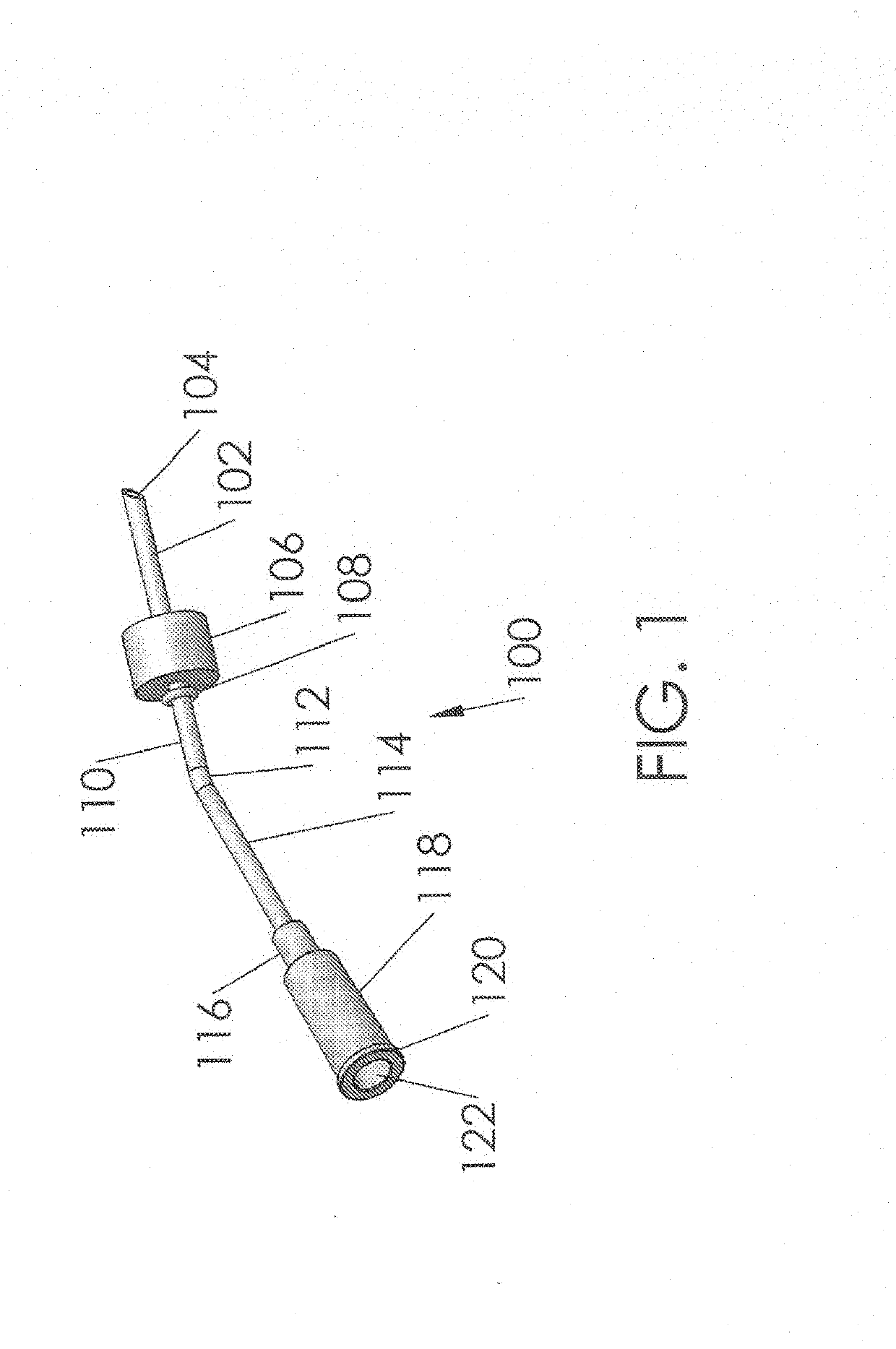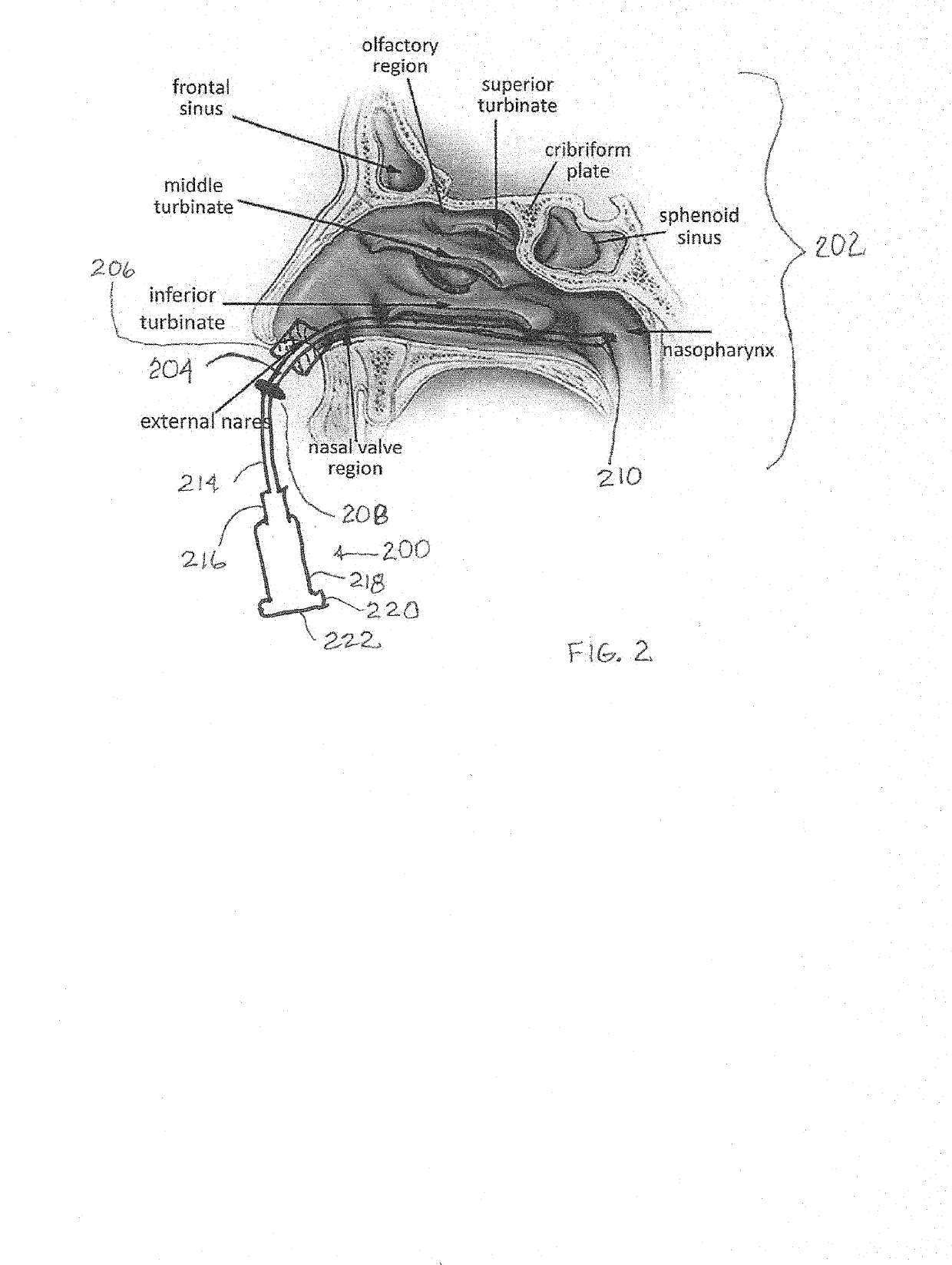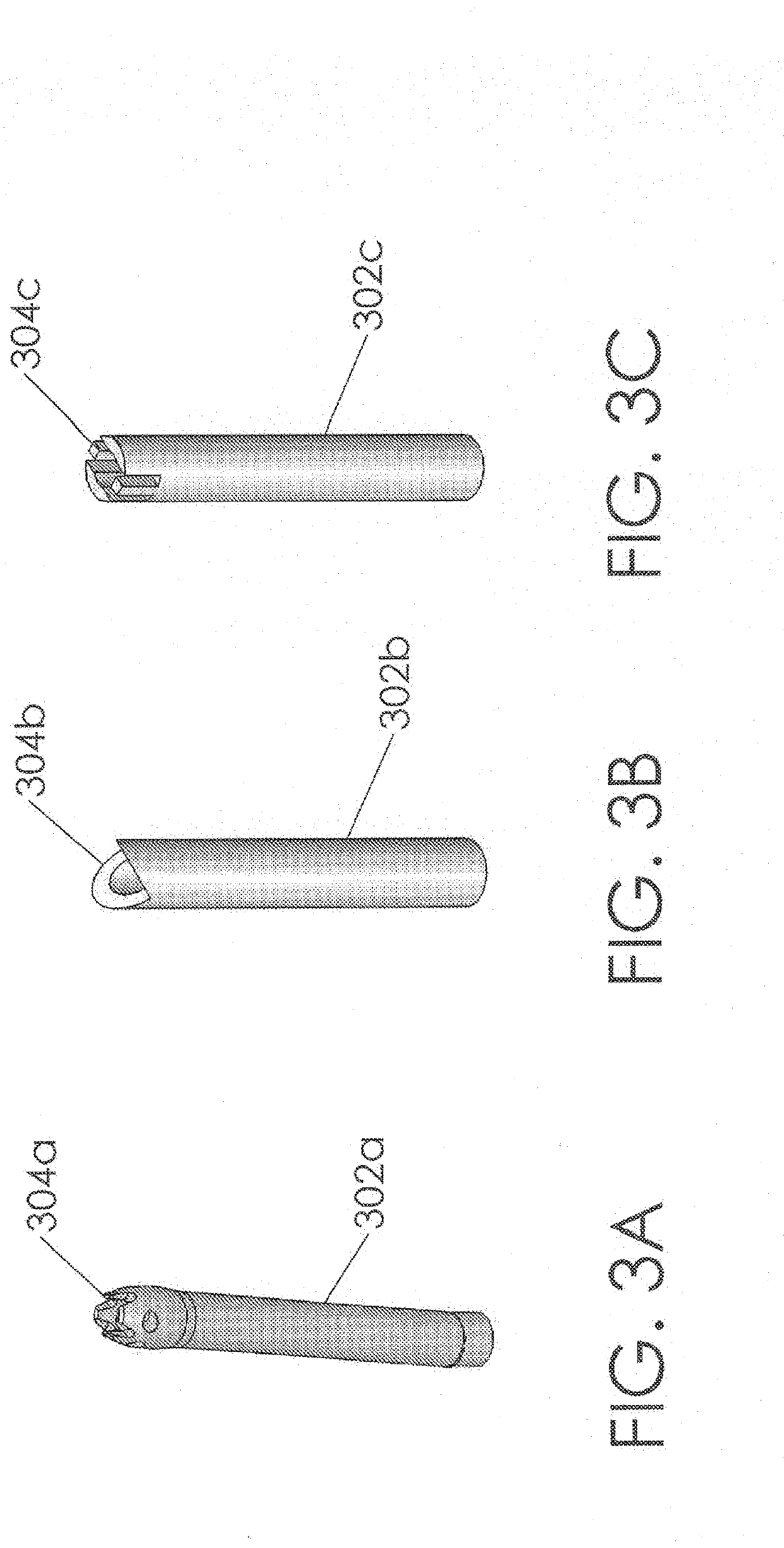Nasal smoke evacuator
a smoke evacuator and nasal tube technology, applied in the field of surgery, can solve the problems of aerosol production, droplet, tissue to be burned away, smoke plume being produced at the operative site, etc., and achieve the effect of effectively evacuating smoke plumes and effectively capturing and removing aerosols
- Summary
- Abstract
- Description
- Claims
- Application Information
AI Technical Summary
Benefits of technology
Problems solved by technology
Method used
Image
Examples
Embodiment Construction
[0037]A system and method to remove smoke, (aerosols, droplets, or other particles during sinus surgery (this may be laser heat, probe heat, resistive electrical heat, abrasive, flame or friction heat and or any other procedure which generates aerosols, droplets or other particles). In one embodiment of the invention, the method includes providing an aerosol evacuator having an elongate tube. The tube may be flexible or rigid. It may be made of polymeric or metal materials.
[0038]A sealing member is connected to the evacuator tube, the sealing member having a proximal side and a distal side. The proximal end of the tube must be long enough to reach a connection to a vacuum source. The sealing member has a central lumen.
[0039]The sealing member is inserted into the nares during or before the surgery, which is to be done on an interior portion of the patient's body, in a cavity in gas-fluid communication with the nasal cavity where the evacuator tube is inserted. The sealing member sho...
PUM
 Login to View More
Login to View More Abstract
Description
Claims
Application Information
 Login to View More
Login to View More - R&D
- Intellectual Property
- Life Sciences
- Materials
- Tech Scout
- Unparalleled Data Quality
- Higher Quality Content
- 60% Fewer Hallucinations
Browse by: Latest US Patents, China's latest patents, Technical Efficacy Thesaurus, Application Domain, Technology Topic, Popular Technical Reports.
© 2025 PatSnap. All rights reserved.Legal|Privacy policy|Modern Slavery Act Transparency Statement|Sitemap|About US| Contact US: help@patsnap.com



